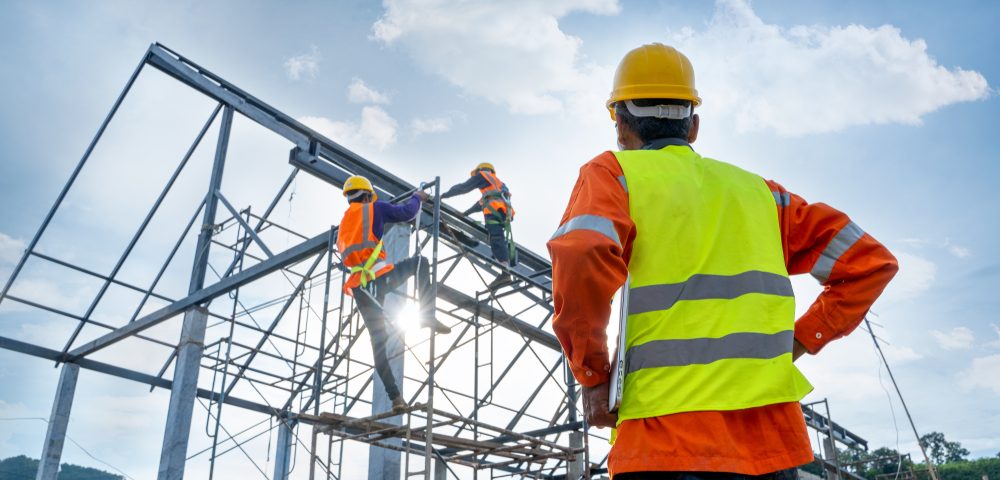Steel Building Construction Timeline Factors

Spray Foam Insulation for Steel Structures
November 3, 2023
Comparing Steel and Titanium for a Project
December 1, 2023Timelines are one of the most important concepts across the world of construction, and any steel or other metal building projects are no exception. There are a number of factors that may influence the overall timeline of any steel or metal structure, and knowing them ahead of time is valuable for project managers, clients and other entities involved.
At Wasatch Steel, we’re here to offer a wide range of steel products and services regularly utilized for steel buildings, including steel sheet, steel plate and many other options. Here are some basics on why timelines are so important within steel building construction, how to separate your project into phases, and some of the main elements that will impact your timeline.
Why Timeline Matters for Steel Building Construction
Just like any other form of construction, timelines are crucial for steel building projects. A proper timeline lays out the path that a project will take, from initial conception all the way to completion, and it includes specific deadlines or milestones along the way. These not only help keep everyone organized but also provide accountability to ensure that everything stays on track.
Furthermore, timelines are also important for budgeting purposes. Knowing the expected timeline of a steel building project allows you to accurately allocate resources and plan financially, ensuring that the project stays on budget. Timelines also help identify potential issues or delays so they can be addressed proactively.
Phases of Steel Building Construction
When it comes to steel building construction, there are typically four main phases: planning, design, fabrication and installation. Each of these phases has its own set of tasks and deadlines that must be met in order for the project to stay on track.
During the planning phase, you will work with your project team to define goals, budget, timeline and other key details. During the design phase, engineers and architects will create detailed plans for the steel structure. The fabrication phase involves the actual production of the steel components, while installation is when everything comes together on-site.
Categorizing Installation Phases
A further sub-category that’s important to be aware of here is within installation itself. Generally speaking, you can split this phase into three sub-phases – here are each of these, plus the broad percentages of project time that should be devoted to each of them:
- Phase 1: All standing columns and trusses should be erected, as well as any wall girts or eave struts required. This phase should take anywhere from 15-25% of total project time.
- Phase 2: Primary framing elements like rafters and purlins go up in this phase, along with insulation backing and roofing panels. Similarly, anywhere from 15-25% of total project time will usually be taken here.
- Phase 3: This is the sheeting phase, where exterior and interior sheeting is applied to the structure. This phase should take up about 40-50% of project time.
Factors That Impact Timeline
There are a number of variables that can impact the timeline for any steel building project, including:
- Design changes: Any alterations made to the original design will likely extend the timeline, as it requires additional planning and fabrication time.
- Weather: Inclement weather can delay installation and may require adjustments to the timeline to account for these delays.
- Permitting: Obtaining necessary permits can take time and may impact the project schedule if not factored in from the beginning.
- Availability of materials and resources: In some cases, certain materials or resources needed for a project may experience unexpected delays, which can cause delays in the overall timeline.
- Labor and workforce availability: A lack of available labor or skilled workers can also impact the timeline, as there may be delays in completing certain tasks.
Be Ready for Delays
It’s a simple reality in the construction industry – delays happen. No matter how well you plan, there will always be some unexpected hiccups that can impact the timeline of your steel building project. That’s why it’s important to build in a buffer when creating your timeline and regularly monitor progress to identify any potential issues early on.
For instance, you can plan for potential weather delays by setting aside extra time in your timeline to account for these. You should also communicate regularly with your project team, suppliers and other involved parties to ensure everyone is on the same page and working towards the same goal.
Importance of Communication
Throughout the entire construction process, communication is vital. It’s important to establish clear lines of communication and to regularly update all parties involved on progress and any potential issues that may arise. This will help keep everyone informed and allow them to make any necessary adjustments to their own schedules or tasks. In addition, open communication can also help identify problems early on, allowing for timely solutions that can keep the project on track.
At Wasatch Steel, we understand the importance of timelines in steel building construction and are dedicated to providing high-quality products and services that can help keep your project on track. Contact us today to learn more about our steel offerings and how we can assist with your next project anywhere in SLC or nearby areas of Utah.



